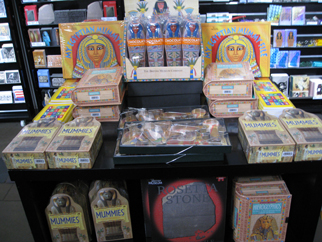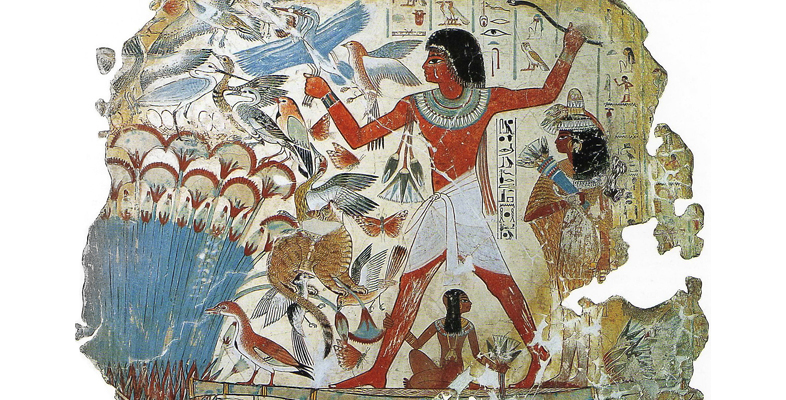7 Beyond the myths
The legacy of Egyptian art, then, is complex. At one level it has become the stuff of cliché (Figure 14): the gamut of Myth & Magic, Chariots of the Gods, re-awakened mummies and the curse of the Tomb, all the way through to Indiana Jones-style ripping yarns. At another it has stimulated complex reflections on authenticity, modernity, and more recently on a range of pressing questions about the Western canon in relation to the art and culture of the rest of the world.

In this course we want to use some of the Egyptian paintings and objects in the collection of the British Museum to go beyond the myths and find out about the meanings of Egyptian art, why it took the form it did, what it can tell us about the conditions of life in ancient Egypt, and what we can deduce from it about our own cultural positioning.
Egyptian art can seem simultaneously too remote, or all too proximate: an off-putting combination of airhead New Age-ism on the one hand or daunting academic specialisation on the other. But for anyone prepared to push through those barriers it can offer a stimulating way into questions of identity and difference – of individuals and cultures – as well as debates about the social purpose or the relative autonomy of art in any culture, our own included.
The paintings discussed in the course are from the tomb of the official Nebamun, who worked in the temple of Karnak at Thebes during the reign of Amenhotep III (c.1390–c.1352 BC) or at the start of the immediately following reign of Amenhotep IV. This was a critical time in Egyptian history. Amenhotep III was one of the most important kings of the Eighteenth Dynasty, one of the high points of Egyptian power, but his reign preceded a period of dramatic upheaval in Egyptian society when his son changed his name to Akhenaten and convulsed the country with a religious revolution.
You can begin by selecting the links to these timelines to place the paintings in the context of Egyptian, British and world art history.
- Link to timeline of British history developed by the BBC [Tip: hold Ctrl and click a link to open it in a new tab. (Hide tip)]
- Link to the Metropolitan Museum of Art’s Heilbrunn Timeline of Art History
- Links to materials about Egypt developed by the British Museum: Link 1 / Link 2
In the following weeks you will find out more about the paintings themselves and develop a more detailed understanding of Egyptian art and society.
